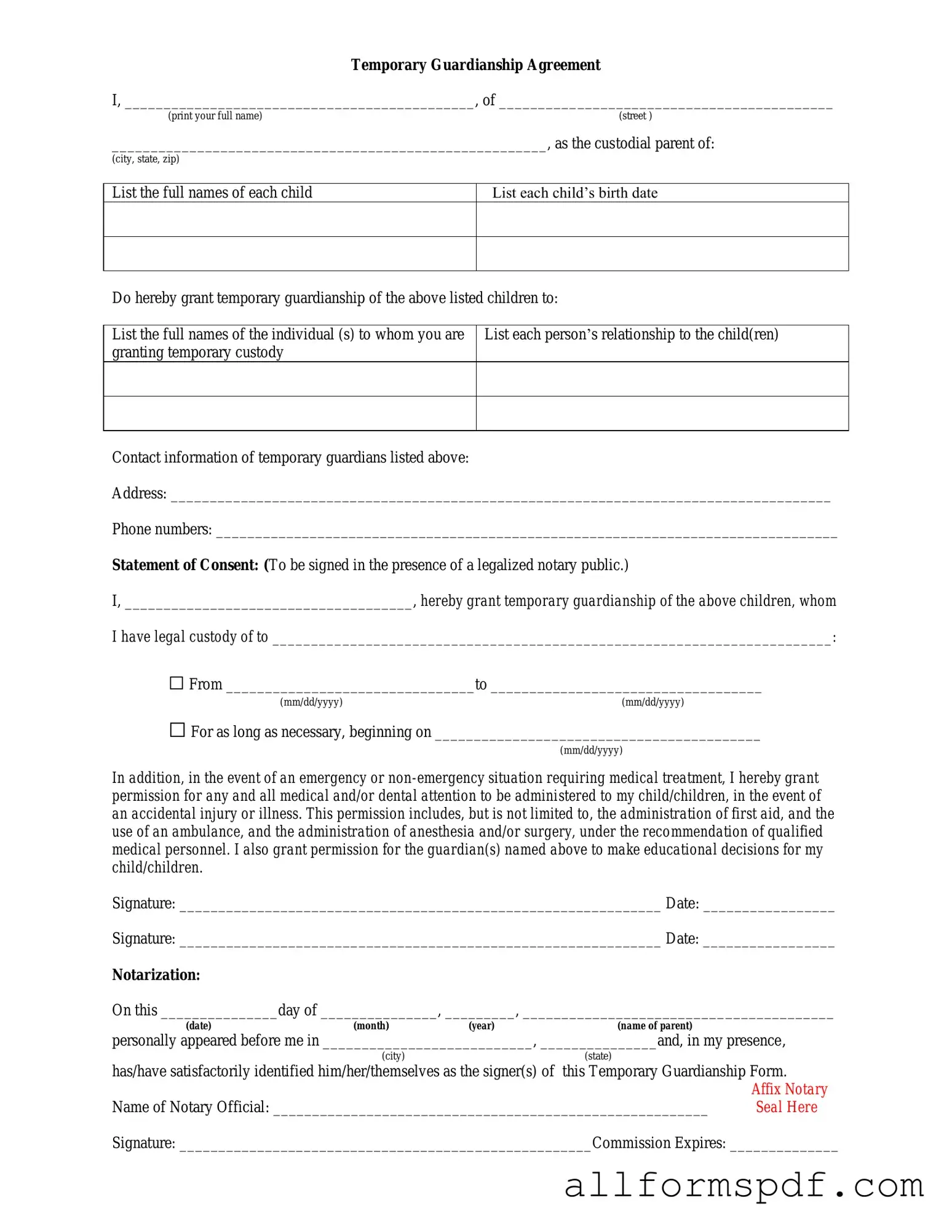Filling out the Temporary Custody form can be a daunting task, and many people make common mistakes that can lead to delays or complications in the process. One frequent error is failing to provide accurate and complete information. Each section of the form requires specific details, and omitting even minor information can result in the form being rejected or returned for correction.
Another mistake is not understanding the legal requirements for temporary custody. Each state has its own laws regarding custody arrangements, and it’s essential to be aware of these rules. Misunderstanding these requirements can lead to submitting a form that does not meet the necessary criteria, which can complicate the custody process.
Many individuals also neglect to include all relevant parties on the form. It’s important to list anyone who has a legal interest in the custody arrangement. Failing to do so can create confusion and may lead to disputes later on. Additionally, some people forget to sign and date the form. Without a signature, the document is not valid, and it will not be processed.
Inconsistent information is another common issue. When filling out the form, ensure that all details match across different sections. Discrepancies can raise red flags and may lead to further inquiries or complications. Furthermore, individuals sometimes underestimate the importance of providing supporting documentation. Relevant documents can strengthen a case and provide necessary context for the custody request.
Another frequent oversight is neglecting to follow the specific instructions provided with the form. Each jurisdiction may have unique guidelines, and not adhering to these can result in delays. Some people also fail to keep copies of the completed form for their records. Having a copy can be invaluable if there are questions or issues later in the process.
Lastly, individuals often miss the deadlines associated with submitting the Temporary Custody form. Timeliness is crucial in custody matters, and delays can negatively impact the outcome. Staying organized and aware of all deadlines is essential to ensure that the custody request is processed smoothly.
